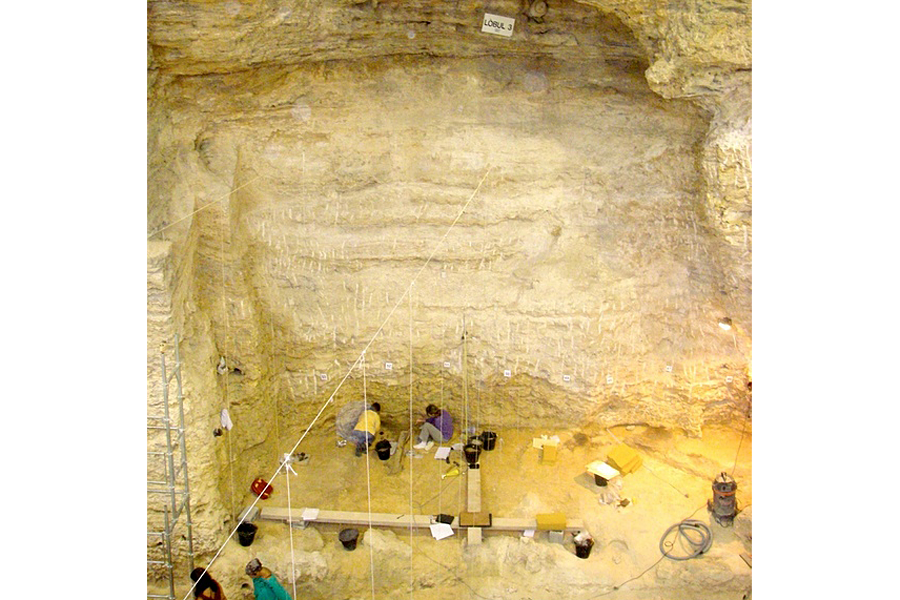Did humans wipe out the Neanderthals? Maybe not.
Loading...
Neanderthals went extinct in Europe about 40,000 years ago, giving them millennia to coexist with modern humans culturally and sexually, new findings suggest.
This research also suggests that modern humans did not cause Neanderthals to rapidly go extinct, as some researchers have previously suggested, scientists added.
Neanderthals are the closest extinct relatives of modern humans, and lived in Europe and Asia. Recent findings suggest that Neanderthals were closely related enough to interbreed with ancestors of modern humans — about 1.5 to 2.1 percent of the DNA of anyone outside Africa is Neanderthal in origin.
It has long been uncertain when Neanderthals went extinct, and there has been much debate over whether interactions with modern humans might have driven their disappearance. Neanderthals entered Europe before modern humans did, and prior studies had suggested the last of the Neanderthals held out there on the Iberian Peninsula until about 35,000 years ago, potentially sharing the region with modern humans for millennia. However, more recent findings suggested that some Neanderthal fossils from Europe might be thousands of years older than previously thought, raising the possibility that Neanderthals went extinct before modern humans arrived in Europe starting about 42,000 years ago. [The 10 Biggest Mysteries of the First Humans]
To help solve the mystery of when Neanderthals went extinct, scientists analyzed bone, charcoal and shell materials from 40 archaeological sites from Russia to Spain. They employed advanced techniques for more precise dating of these specimens that involved ultra-filtering molecules from bone samples for examination and removing organic contaminants that could make specimens seem younger than they actually are.
The new findings suggest that Neanderthals disappeared from Europe between about 41,000 and 39,000 years ago.
"I think that, for the first time, we have a reliable extinction date for Neanderthals," said study author Tom Higham, a radiocarbon scientist at the University of Oxford in England. "This has eluded us for decades."
The Neanderthal extinction occurred across sites ranging from the Black Sea to the Atlantic Coast of Europe. The timing and geography suggest Neanderthals may have overlapped with modern humans for 2,600 to 5,400 years, opening the door for genetic and cultural exchanges between the two groups for millennia.
These findings suggest that modern humans did not rapidly replace Neanderthals in Europe — say, via violent means. Rather, the Neanderthal extinction "might have been more complex and drawn out than previously thought," Higham told Live Science.
There is some genetic evidence that Neanderthals in Western Europe may have experienced declining genetic diversity about the time when the first modern humans began arriving on the continent, Higham said. "This might mean that they were fading out at this time, although, of course, our evidence suggests that there was a long period of overlap during which this occurred," he said.
Neanderthals may not even have truly disappeared, but instead have been assimilated into modern human populations. "We know, of course, that we have a genetic legacy from Neanderthals of about 1 to 2 percent, so there was interbreeding," Higham said.
One mystery regarding sex between Neanderthals and modern humans is that the greatest amount of interbreeding between the two lineages is currently thought to have occurred about 77,000 to 114,000 years ago, preceding any potential interbreeding in Europe. However, Higham noted more recent as-yet-unpublished data suggest the interbreeding events occurred about 55,000 to 60,000 years ago, more in tune with interbreeding scenarios involving Europe. "What is needed is more genetic analysis of human bone from this transitional period in Europe," Higham said.
In the future, the researchers plan to extend their work into Eastern Europe and wider Eurasia to widen their data set and look for more patterns in the data pertaining to the Neanderthal extinction and the spread of modern humans, Higham said.
The scientists detailed their findings in the Aug. 21 issue of the journal Nature.
Follow us @livescience, Facebook & Google+. Original article on Live Science.
- In Photos: Neanderthal Burials Uncovered
- In Photos: New Human Ancestor Possibly Unearthed in Spanish Cave
- In Photos: Amazing Human Ancestor Fossils from Dmanisi
Copyright 2014 LiveScience, a TechMediaNetwork company. All rights reserved. This material may not be published, broadcast, rewritten or redistributed.







